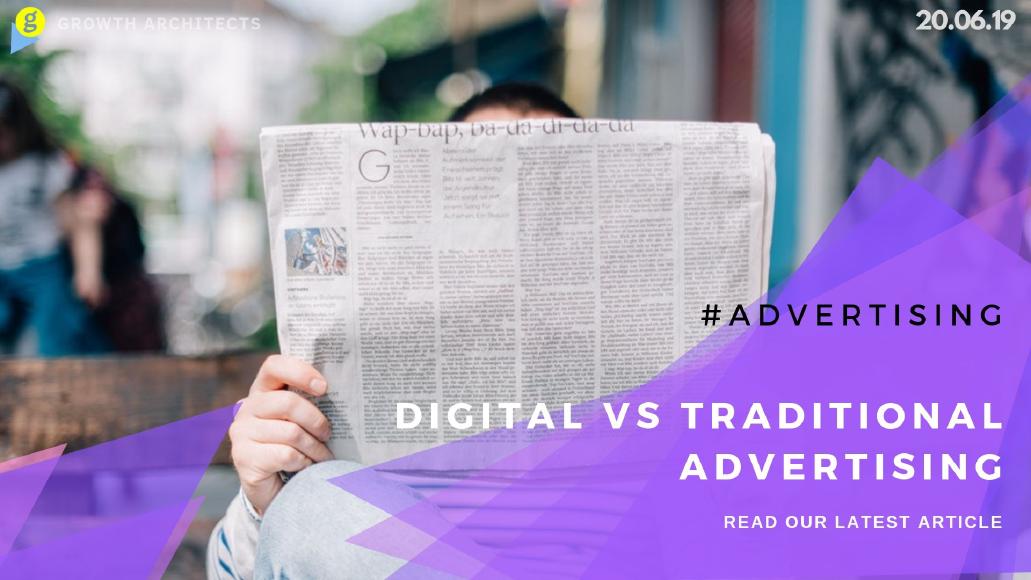Deciding where your budget is best spent is the dilemma of all marketers. Whether it be geared for customer acquisition, brand awareness or PR, there are endless decisions regarding where best to get the most bang for your bucks (or pounds).
Some believe traditional channels (magazines, journals, physical banner ads) are dead, others are dead-set on digital (Google Ads, sponsored posts, Facebook ads) being the only way forward. Traditional offers benefits which digital can’t touch and vice versa – so what are the Pros and Cons of Digital vs Traditional?
The benefit of Traditional advertisement
Advertising in physical print, including Flyers, Brochures, Posters, magazines or journals are an effective way of getting your business or products in-front of difficult to reach audiences.
Those who are targeting a mature age range (anything from 40+) may find they get better results from advertising in traditional channels because this particular audience isn’t always plugged in and may find themselves reading though literature from their coffee table rather than their tablet.
Repeat readership is also a huge benefit from this type of advertisement; magazines remain on coffee tables and reception areas for a long period of time meaning that the reader will jump back into the content every now and then. They may also have multiple occupants in their homes, helping to reach a broader audience such as spouse, siblings, family friends and children.
Benefits
- Exposure to difficult to reach demographics.
- Repeat viewings.
- Reach of secondary audiences.
Negatives
- More expensive
- Difficult to measure ROI
- Pricing is often obfuscated
- Difficult to forecast
The benefit of digital advertising
This is often the bread-and-butter solution of many businesses due to the channels ability to give you fairly reliable forecasts and associated costs. Through Google Ads, for example, you can predict the number of views your advert will experience, the cost of each interaction and how frequently it will convert viewers into customers.
With online advertisements, you can control budgets ensuring that if one of your adverts starts bringing customers through your doors for an acceptable cost, you can scale it up straight away – capturing more customers, faster (when compared with traditional).
Targeting specific demographics or potential customers who have expressed interest in products similar to yours is also made simple through Facebook or Google Ads. Within their platform, you can adjust your advertisements targeting to show your advert to an audience which matches a specific age range, location, interest, online behaviour and purchasing history.
Benefits
- Metrics provided in real-time for better measurability.
- Define audience in real-time, tweaking as you go.
- Ability to scale up/down your adverts exposure.
- Change your adverts appearance/contents in real-time.
- Cheaper than traditional adverts.
Negatives
- Takes experimentation to get the best results.
- Costs can spiral if metrics aren’t monitored closely.
- Technology driven – steep learning curve.
Summary
It’s easy to look at the above and disregard traditional print, however the best campaigns harness both digital and traditional. Combining both channels provides the best results and considering that prospects typically need to come across your brand/product 7 times before they really notice it, it can help increase average conversion rates across the board. Combining social, PPC and traditional prints can be a great strategy for targeting specific demographics – perhaps you advertise in a locally distributed journal and launch a Google Ads campaign to target that same audience? Not only will they see your business when they perform relevant searches but they’ll also discover your brand when they sit down with a cup of tea in the afternoon. Splendid.


